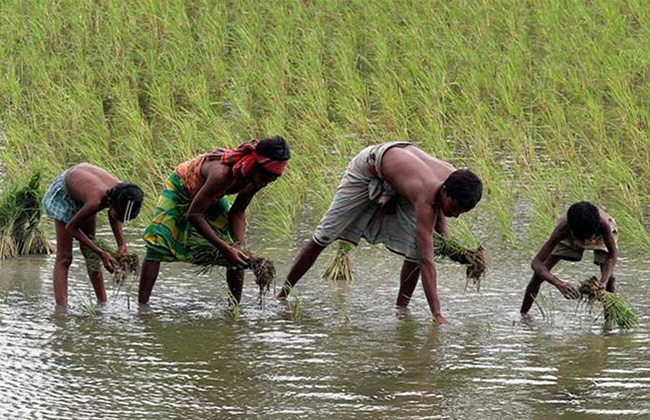
Currently, one of the most concerning facts for Bangladesh is the disappearance of its arable lands at an alarming rate. Growing industrialisation, rapid urbanisation and mindless encroachment of human habitat have quickened the process. According to World Bank data, 66.1 per cent of the total area of Bangladesh was farmland back in 1961, which stood at 58.92 per cent in 2014. Bangladesh Bureau of Statistics, in its recent report, has also mentioned that the arable lands in the country are fast depleting by around 40 thousand hectares each year due to non-farm purposes, meaning there would be literally no farmland after 50 years from here on.
Subsequently, the country will lose food security, making its people entirely exposed to the volatility of the international food market. In search for farmlands for the country’s rising population, forests would be diminished–which now roughly stands 11 per cent of the total area–and water bodies would be filled up as a consequence, implicating an irreparable damage to environment and nature, which might more frequently cause natural calamities like flood, draught, cyclone, landslide. Huge numbers of people would turn into climate refugees, causing strained relations with its neighbour countries.
There is a need for working out an effective strategy to check the country’s fast-shrinking arable land and thus maintain the momentum in increasing its food grain production. The government alone cannot put an end to unplanned construction of dwelling houses on arable land. In such a situation, we have to find out a way on how more crops could be produced in a small land. As urban areas worldwide continue to grow, the population spreads to the surrounding rural and suburban areas. This puts pressure on farmers to give up their croplands and fields so that houses in the countryside can be ‘grown’. Many farmers give in to the economic pressures when they realise that the land that they are farming can provide them with substantial cash and they would no longer be engaged in a practice that is at the mercy of weather and economic conditions.
What is alarming is that a fast-growing population in the country, already with the world’s highest density of people, is looking for new land to build homes. Entrepreneurs are going to the remote areas to set up factories. If the trend is not reversed now, the country would permanently lose its food security, making its poor population more vulnerable to volatile international commodity prices.
Therefore, a solution to the critical issue of farmland depletion could be formulation of an erudite and pragmatic land-use policy. Notably enough, the 2009 parliamentary standing committee on agriculture suggested a stringent law to completely stop the use of agricultural lands in non-farm activities. The government should no longer delay and hesitate in enacting the law in this respect. The horizontal expansion of residences, schools-colleges, factories, industries and the like should be minimised while they may be encouraged to go vertical. The high population growth rate should be checked. Farmers, on the other hand, should be discouraged from the overuse of fertilisers and insecticides in soil, for these chemicals may loosen the soil compaction to quicken erosion.
An inclusive effort from all quarters of the country can prevent the farmlands from diminishing any further.


